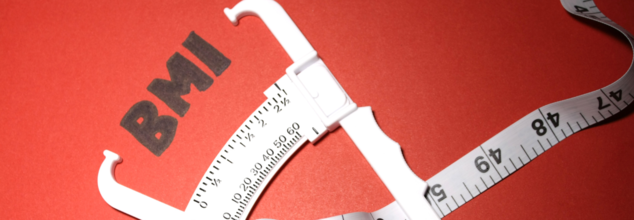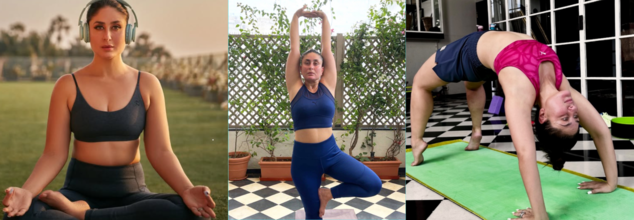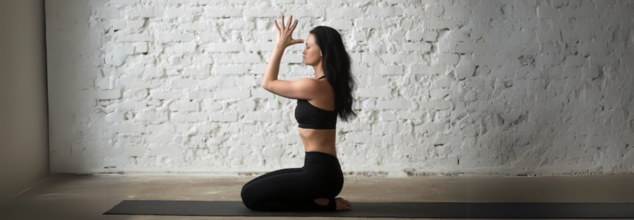- Health Conditions A-Z
- Health & Wellness
- Nutrition
- Fitness
- Health News
- Ayurveda
- Videos
- Medicine A-Z
- Parenting
- Web Stories

(Credit-Canva)
Ultimate Yoga Pose That Improves Balance, Focus And Strengthens Your Ankles
The balance our body gives us is something that most of us take for granted. Doing exercises that build core strength and help you gain better balance. However, once you start focusing on exercises and yoga poses that allow you to gain better control over your body, a lot of your clumsy attributes like tripping, being unable to catch yourself when you fall and dropping things constantly will improve.
One such yoga pose that can help you improve your balance and focus, is Vrikshasana. As you may know, there are different types of yoga, while some help you strengthen your body with rapid movements and endurance, others are more movement based, focused on the flow and connection between poses. These consist of many different asanas that focus on different aspects of your health and body.
How Does Virkshasana Benefit Our Health?
According to the International Journal of Yoga 2016 study, while most of us focus on backward and forward movement, sideways balance involves hip and ankle muscles too. It's been found that sideways changes are controlled by hip muscles, while forward and backward changes are controlled by ankle muscles. Virkshasana aims to strengthen our ankles and take pressure of your feet with the help of your hip muscles. Here is how it benefits our health.
Improves Balance
Tree Pose makes you stand on one leg, which really challenges your balance. Your brain and muscles work together to keep you steady, strengthening this important skill for everyday activities and preventing falls. It helps your body learn to control its center of gravity.
Strengthens Legs
To stay standing tall in Tree Pose, your standing leg muscles have to work hard to support your weight. Holding the pose builds strength in your thighs, calves, and ankles, making them more stable and resilient for walking, standing, and other movements.
Stretches Legs, Arms, and Back
When you reach your arms overhead in Tree Pose, it creates a nice stretch along your sides and back. The way you position your lifted leg can also create a stretch in your hips and inner thighs, improving flexibility in these key areas of your body.
Invigorates the Whole Body
By engaging different muscle groups and requiring focus, Tree Pose helps to wake up your entire system. The combination of stretch, strength, and balance work can leave you feeling more energized and connected to your body after practicing the pose.
Engages Core Muscles
Although not the main focus, staying balanced on one leg in Tree Pose requires your core muscles – those in your abdomen and back – to work to keep you upright and prevent wobbling. This helps to strengthen your core for better posture and stability.
Step-By-Step Guide Of Doing Vrikshasana
- Stand with your feet together and your arms relaxed by your sides. Look straight ahead at a steady point.
- Slowly move your weight onto your right leg, making sure it feels strong and balanced.
- Gently lift your left foot and place the sole of your foot on your inner right thigh. Avoid putting it directly on your knee.
- Press your left foot gently into your right thigh and your right thigh back into your foot. Engage your core muscles to help you stay steady.
- Bring your palms together in front of your chest in a prayer position (Anjali Mudra).
- If you feel stable, slowly raise your arms overhead, keeping your palms together or facing each other.
- Breathe smoothly and deeply, holding the pose for about 20-30 seconds, or as long as it feels comfortable. Keep your gaze steady.
- Slowly bring your hands back to your chest, then lower your left leg back to the ground.

Credits: Canva
Body Mass Index - What It Means Vs What It Doesn't
Body Mass Index or BMI is a calculation that is used to understand the relationship between your height and weight. It is very commonly used in healthcare settings and also in gyms or weight training centers. It helps fitness coaches and healthcare professionals to categorize people as underweight, normal weight, overweight, or obese. The goal of BMI is to get a rough estimate of body fat, which can then highlight potential risks for chronic health problems.
But while BMI is easy to calculate and useful as a general guideline, it doesn’t tell the full story of a person’s health.
How Is BMI Calculated?
The formula for BMI differs slightly depending on the measurement system you use.
Metric: BMI = weight (kg) ÷ height (m²)
Imperial: BMI = (weight in pounds ÷ height in inches²) × 703
For example, someone who weighs 180 pounds and is 5 feet 6 inches tall (66 inches) would have a BMI of:
(180 ÷ 66²) × 703 = 29.0
That would place them in the "overweight" category.
BMI is also divided into these categories that then determine where the person falls under the spectrum from underweight to obesity:
- Underweight: less than 18.5
- Normal: 18.5 – 24.9
- Overweight: 25.0 – 29.9
- Obesity Class 1 (mild): 30.0 – 34.9
- Obesity Class 2 (moderate): 35.0 – 39.9
- Obesity Class 3 (severe): 40.0 or higher
Generally, the higher your BMI, the greater your risk of health conditions such as heart disease, type 2 diabetes, high blood pressure, sleep apnea, fatty liver, and even certain cancers.
Is BMI Reliable?
While BMI is not a diagnostic test, it can be a helpful screening tool. It is used to track trends in population, raise awareness of weight-related risks, and to initiate conversations between patients and healthcare providers.
However, BMI often leaves out the muscle mass, bone structure, or fat distribution. One of the most common example is when an athlete with high muscle mass is classified as "overweight" despite having a low body fat.
This is why, there are other ways to measure too, including:
Waist Circumference
Excess belly fat is a stronger risk factor than fat stored elsewhere.
High risk:
Men: waist > 40 inches
Women: waist > 35 inches
Body Composition Analysis
Tools like InBody or SECA scales provide a breakdown of fat mass, muscle, and water weight—offering more detail than BMI.
DEXA Scan
This scan is the gold standard for measuring body fat, bone density, and fat distribution—but it’s expensive and not widely available.
Metabolic Health Markers
Lab tests like fasting glucose, cholesterol levels, and inflammation markers help assess overall health more accurately than BMI alone.
BMI could also vary depending on your ethnicity. More South Asians are risk for diabetes and heart disease at lower BMIs. For them, "overweight" may begin at 23 and "obese" at 25. African Americans may have higher muscle mass and lower visceral fat, which can cause BMI to overestimate health risks. Hispanic and Indigenous populations may carry more risk at lower BMIs due to genetic factors.
While it is important to care about your BMI, however, it should not be the only way to measure your health. You must also consider waist size, body composition, fitness level, blood test results, and ethnic background.

Credits: Instagram
These Six Yoga Asanas Helped Kareena Kapoor Khan To Maintain A Smaller Waist
Kareena Kapoor Khan, and whatever she does, is always making headlines. Even at the age of 44, she is an epitome of fitness. Out of her duties, she ensures to devote time to fitness, through various workout forms, including yoga.
Her Yoga instructor, Anushka Parwani, revealed in a recent interview with ETimes that Kareena in fact was her first ever student. She had always focused on fitness over weight loss.
Anushka Parwani is a celebrity trainer, who has trained Alia Bhatt and Deepika Padukone. In the interview, she shared insights from Kareena's routine and how her dedication to yoga keeps her fit!
What has helped Kareena is how she has been able to understand her body and its need and thus she compliments those needs with yoga. Her instructor also revealed that Kareena never desired to lose weight, but to maintain her overall fitness, including adjusting her waist size.
"Kareena is the most aware of her body. I know this because I have been with her...she was my first-ever student, not just the first actor I worked with. There is so much to learn form her because she is so aware. She has always loved yoga, and she understands her body as well. So, we know when to push a little and alter the workout or when to do variations and just do breathwork. Right now, we are very balanced. It is also about pausing. With experience and age comes pausing; she knows when to pause," shared her instructor.
Her instructor also revealed that the actor does a lot of mixes of animal flows, and strength, as well as cardiovascular-based workouts.
However, reveals her instructor, her true best friend to fitness has been yoga. This is also because Yoga offers a sustainable and holistic solution. It also combines fat-burning, muscle toning, and core strengthening benefits. Furthermore, yoga also helps one calm there mind.
Here are 6 yoga asanas that can help you stay fit and keep your waistline in check like Kareena Kapoor khan.
Here's for you to try out:
Trikonasana (Triangle Pose)
Benefits: Strengthens legs, stretches the spine and waist, improves digestion.
Steps:
- Stand with your feet 3–4 feet apart.
- Turn your right foot out 90°, and left foot slightly in.
- Extend your arms out at shoulder height, palms facing down.
- Inhale, then exhale and bend to the right, placing your right hand on your shin, ankle, or floor.
- Stretch your left arm toward the ceiling, in line with your shoulders.
- Look up at your left hand. Hold, then repeat on the other side.
Naukasana (Boat Pose)
Benefits: Tones abs, improves balance, strengthens core and hip flexors.
Steps:
- Sit on the floor with legs extended and arms by your sides.
- Lean back slightly and lift your legs off the floor, keeping them straight.
- Raise your arms forward, parallel to the floor.
- Your body should form a "V" shape.
- Hold the pose, keeping your back straight and core engaged.
- Breathe steadily, then release gently.
Ardha Matsyendrasana (Half Spinal Twist Pose)
Benefits: Improves spinal flexibility, aids digestion, massages internal organs.
Steps:
- Sit with legs stretched out.
- Bend your right knee and place your right foot outside your left thigh.
- Fold your left leg, placing the left foot beside the right hip.
- Inhale, raise your left arm; exhale and twist to the right, placing your left elbow on the outside of the right knee.
- Place your right hand behind your back for support.
- Look over your right shoulder. Hold, then repeat on the other side.
Parivrtta Utkatasana (Revolved Chair Pose)
Benefits: Strengthens thighs and glutes, improves balanceand detoxification.
Steps:
- Stand with feet together, arms by your side.
- Inhale, raise arms overhead; exhale and bend knees to sit into a chair pose.
- Bring palms together at your chest (Namaste).
- Twist your torso to the right, bringing your left elbow outside your right knee.
- Keep knees aligned and spine long.
- Hold, then return to center and repeat on the other side.
Bhujangasana (Cobra Pose)
Benefits: Strengthens back muscles, opens chest, relieves stress.
Steps:
- Lie face down with legs extended, tops of feet flat on the mat.
- Place hands under your shoulders, elbows close to the body.
- Inhale, gently lift your chest off the floor using your back muscles.
- Keep elbows slightly bent and shoulders away from ears.
- Hold while breathing steadily, then slowly lower down.
Vasisthasana (Side Plank Pose)
Benefits: Strengthens arms, core, and legs; improves balance.
Steps:
- Start in a plank position.
- Shift your weight to your right hand and outer edge of the right foot.
- Stack your left foot on top of your right.
- Raise your left arm straight up toward the sky.
- Keep your body in a straight line, core engaged.
- Hold, then return to plank and switch sides.

(Credit-Canva)
Suffering With High Blood Pressure? This Yoga Pose Can Help With That And More
Yoga is an adaptable exercise that has poses and asanas to accommodate people according to their needs. Not everyone can perform the exercises at the same level as an experienced yoga practitioner. There are standing, flowing as well as sitting poses, these ranges allow people with all kinds of abilities to practice yoga, whether they have mobility issue, or motor control issues etc.
When it comes to conditions like heart issues, high blood pressure and blood sugar issues, people have to be very cautious. While controlling food helps them improve their health, without exercise it is not easy to do so. If you are also struggling with these issues but are unsure of what exercises you must do, try yoga. There are many poses that can help you build your health and live a healthier life like Vajrasana pose. It is a simple sitting pose that not only improves high blood pressure, but also reduces back pain, increases focus etc.
What is Vajrasana Pose?
In Vajrasana, when you kneel and sit back, it gently takes some of the pressure off your knees. This position is often used when you're doing breathing exercises to calm your mind or when you're meditating to feel more peaceful inside. People who follow Ayurvedic medicine, an old Indian system of health, believe that sitting in this way helps your body become as strong and stable as a diamond. It's about finding strength in being still and focusing your energy.
Here’s how to do it
- Begin by kneeling down on the floor. Consider placing a yoga mat underneath for added comfort to your knees and shins.
- Bring your knees and ankles together so they are touching. Point your feet straight back behind you, in line with your legs. The soles of your feet should face upward, and your big toes should touch gently.
- Exhale slowly as you gently lower your buttocks down to rest on your heels. Your thighs will naturally rest on top of your calves in this position.
- Place your hands on the tops of your thighs. Gently adjust your pelvis by rocking slightly backward and forward until you find a comfortable and balanced seated position.
- As you inhale and exhale slowly, focus on straightening your spine. Imagine a gentle lift from the base of your spine to the crown of your head, helping you sit tall. Gently press your tailbone slightly towards the floor.
- Straighten your head so you are looking directly forward, with your chin parallel to the floor. Rest your hands on your thighs with your palms facing down, keeping your arms relaxed. Breathe gently and evenly in this pose.
When Should You Avoid Doing Vajrasana
Before you start doing any yoga exercises, it's a good idea to talk to your doctor. They can tell you how yoga might affect your current health and suggest ways to do it safely so you don't have any problems. Here are some reasons why you should avoid doing this pose.
- If you have recently undergone surgery on your knees.
- If you have a condition that affects your spinal cord, particularly in the lower vertebrae (lower back)
- If you have intestinal ulcers, a hernia, or any other intestinal problems such as an ulcer or hernia
- If you are pregnant, it's important to speak with your doctor before attempting Vajrasana.
© 2024 Bennett, Coleman & Company Limited

